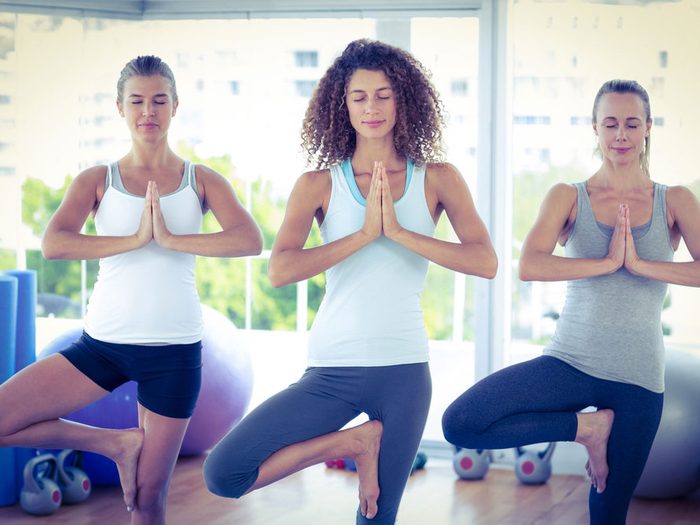
Kegels vs Yoga
When it comes to your workout, exercising your pelvic floor probably isn’t part of the routine. But it should be—a strong pelvis is linked to good balance, a healthy bladder—and even with better breathing.
“The pelvic floor works together with your diaphragm like the movement of an undulating jellyfish,” explains Leslie Howard, an Oakland, California-based yoga instructor who specializes in pelvic-floor health.
The pelvic floor consists of muscles, ligaments and nerves that act like a hammock to support your organs. Most of us think we need to tighten these muscles (with Kegels, for example), but that’s not always the case. According to Howard, some women have overly tight pelvic floors, because of bad posture or long periods of sitting, for example. “A lot of people have to learn how to release their pelvic floor before they can do any kind of strengthening exercise,” she says.
Another typical problem is the imbalance between the left and right sides of the pelvic floor, which could be caused by always crossing the same leg, or standing on the same leg and throwing your other leg out to the side. For example, a sport like soccer might contribute to this.
Think you can fix pelvic floor issues with Kegels alone? Think again: “Most women have heard of Kegels, but in my experience, hardly anyone is doing them well or correctly,” Howard points out.
The good news: Doing yoga is one of the best ways to improve pelvic floor health. Read on for five yoga poses recommended by Howard.
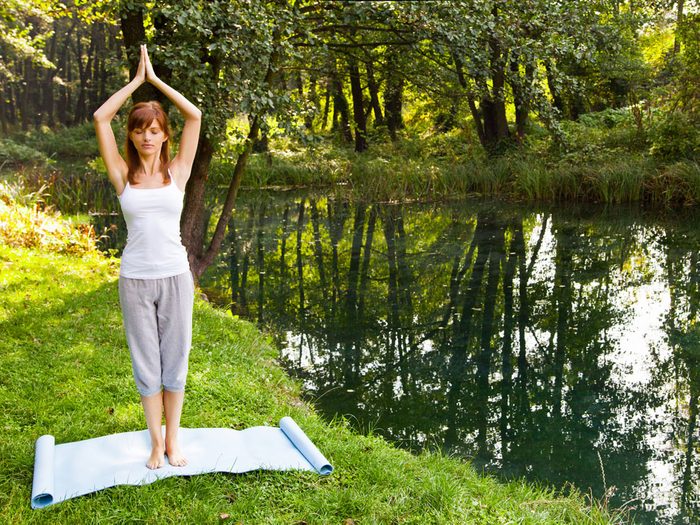
Mountain pose (Tadasana) with yoga brick
This is the foundational pose for all standing postures in yoga. Start by standing, feet hip-width apart and hands resting at your sides. Place a yoga brick between your thighs. Engage your inner thighs and try to lift the brick upwards.
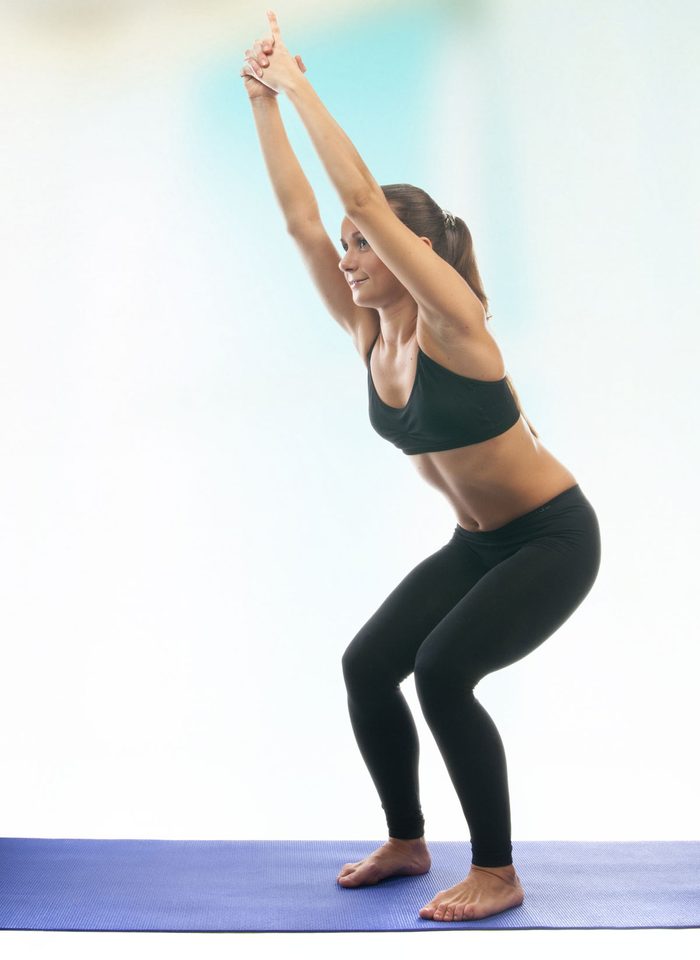
Chair pose (Utkatasana)
“Going in and out of chair pose is really good for the pelvic floor,” explains Howard. “The floor is stretched when going down, and lifted when coming up.”
Start in Mountain Pose, with arms out in front of you, parallel to the floor. Bend your knees and push your hips back in a squat, as if you were going to sit onto a chair. Make sure you don’t bring your hips down lower than your knees.
(Related: Do You Pee When You Sneeze? Here’s How to Stop It)
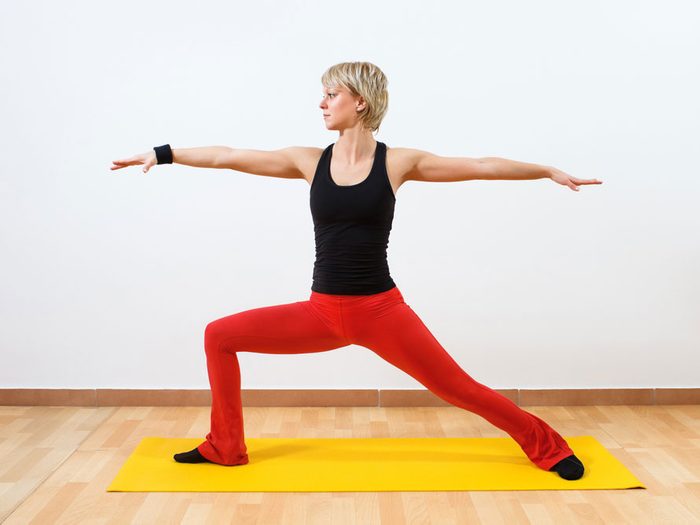
Warrior II (Virabhadrasana II)
“This pose helps to lift the perineum if you really ground into the heels and work the legs,” says Howard. Starting in Mountain Pose, step your right foot back about three or four feet. Turn your left foot slightly in and your right foot out so that your toes are pointing away from your body. Bend the left knee over the left ankle, bringing your left thigh parallel to the floor. Straighten the right leg and press heel down into the floor, then raise your arms parallel to the floor, palms down. Hold the pose for 30 seconds to one minute, then repeat on the other side.
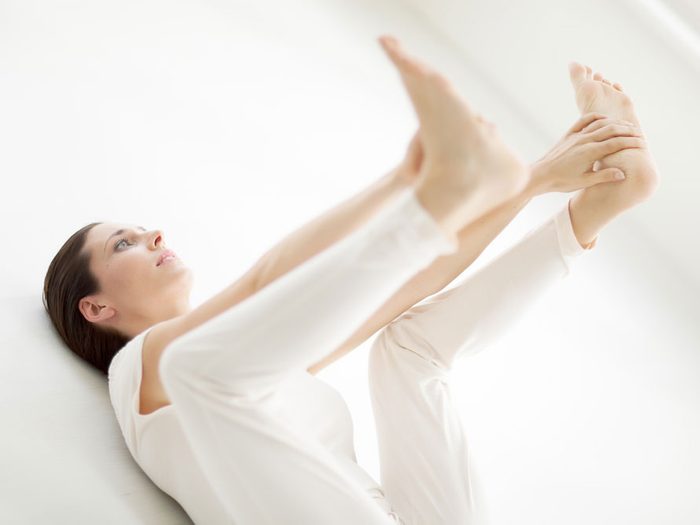
Happy Baby (Ananda Balasana)
This pose is especially helpful for those of us who sit for long periods. Howard suggests placing something under your head for support, in order to properly release the tailbone. “People tend to round their backs to do Happy Baby, so putting that support in place will minimize that and allow the pelvic floor to stretch maximally.”
Lie on your back and, as you inhale, bend your knees and bring them toward your chest. Open your knees wide, bringing them toward your armpits. Your shins should be perpendicular to the floor, with ankles in line with knees. Grab the outside edges of your feet and gently push feet up into hands while pulling back with your arms.
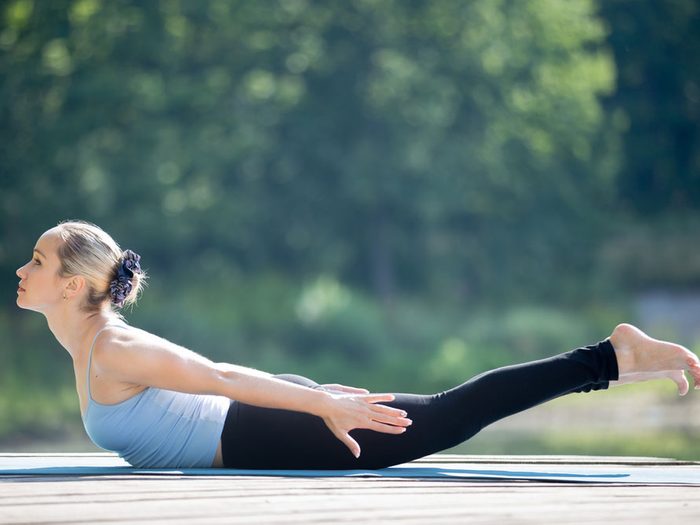
Locust pose (Salabhasana)
“This is an important pose because it works the gluteus muscles, which counter-balance pelvic floor,” explains Howard. “Here’s the caveat: A lot of people can do this pose without using their butt, because they’re overusing their hamstrings. So make sure the buttocks and the hamstrings are lifting the legs.”
Lie on your belly with your arms on your sides, palms up, forehead resting on the floor. Inhale and lift your head, chest, arms, legs and feet off the floor. Firm your glutes and reach through your legs, keeping the big toes turned toward each other. Stay here for 30 seconds, then slowly release.
Next: Can a Kegel Chair (Yes, a Kegel Chair) Improve Your Pelvic Health?
